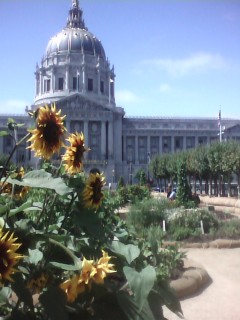I’m a huge fan of dense urban development, of making population centers that allow lots of people to live on small parcels of land with amenities within walking distance or available via public transit. I think suburban sprawl is unhealthy (nobody walks), causes pollution (driving everywhere) and is unsustainable given its extremely high resources consumption (which is finally becoming understood).
So it’s exciting to see legislation designed to start curbing sprawl and to encourage dense development centered around transit (from the San Francisco Chronicle):
Many California planning and environmental groups are heralding the passage of legislation designed to address global warming by curbing suburban sprawl as a watershed moment, perhaps the state’s most important land-use law in more than 30 years.
“It’s a sea change in the way we’re planning and funding growth and development,” said Stephanie Reyes, senior policy advocate with San Francisco’s Greenbelt Alliance. “The winds are shifting, and this is the time to get on board.”
But she and other advocates acknowledge that the importance of SB375, signed into law by Gov. Arnold Schwarzenegger in late September, lies as much in the tone it sets as in what it will accomplish, which remains unclear.
Essentially the law, which will take years to implement, uses incentives and requirements to encourage local governments and builders to concentrate growth in urban areas or close to public transportation hubs in an effort to reduce Californians’ use of cars and lower their greenhouse gas emissions.
The ultimate impact will depend on how the legislation is put into effect, and whether its carrots and sticks will outweigh the cries from people who don’t want big new buildings on their block.
Whatever the law’s accomplishments, proponents hope it sends a clear message that will be reflected in future legislation and policies on the state and local levels: Dense, transit-oriented development is a critical goal for the collective good.
“A small step can be an important step if it’s the step that turns the corner,” said Tom Adams, board president of the California League of Conservation Voters, the principal drafter of the legislation. “I think it will change forever the way we look at land use in California.”
